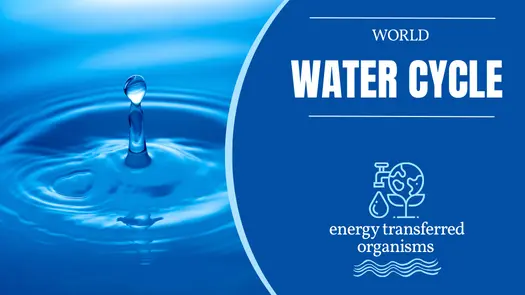Introduction:
Energy transfer is a vital process that occurs in all living organisms. Energy is transferred from one organism to another through this process. The energy-transferred organisms are a critical component of the ecosystem and play a significant role in maintaining the balance of the ecosystem. In this article, we will explore the concept of energy-transferred organisms, their significance, and their contribution to the ecosystem.
What are Energy Transferred Organisms?
Energy-transferred organisms are living organisms that receive energy from other organisms. These organisms are part of the food chain and depend on other organisms for their survival. Energy-transferred organisms can be classified into two categories:
Producers:
These creatures use photosynthesis to create their food. The producers include things like plants and algae.
Consumers:
These are organisms that consume other organisms for energy. Consumers can be further classified into three categories:
Herbivores:
These are organisms that consume only plants. Examples include cows, deer, and rabbits.
Carnivores:
These are organisms that consume other animals. Examples include lions, tigers, and snakes.
Omnivores:
These are organisms that consume both plants and animals. Examples include humans, bears, and pigs.
Energy-transferred organisms are essential to the ecosystem as they are responsible for transferring energy from one organism to another.
How Do Energy Transferred Organisms Contribute to the Ecosystem?
Energy-transferred organisms play a vital role in maintaining the balance of the ecosystem. They contribute to the ecosystem in the following ways:
Nutrient Cycling:
Energy-transferred organisms help in the cycling of nutrients in the ecosystem. When an organism dies, its nutrients are released into the soil, which is then used by other organisms.
Control of Population:
Energy-transferred organisms help in controlling the population of different species in the ecosystem. For example, if the population of herbivores increases, it will lead to a decrease in the population of plants.
Transfer of Energy:
Energy-transferred organisms are responsible for transferring energy from one organism to another. This transfer of energy helps in maintaining the food chain and ensuring the survival of different species.
Decomposition:
Energy-transferred organisms, such as decomposers, are responsible for breaking down dead organism and organic matter into simpler substances. This process helps in the recycling of nutrients and the release of energy.
Examples of Energy Transferred Organisms
Plants:
Plants are producers and are responsible for producing their food through photosynthesis. They are an essential source of energy for other organisms in the ecosystem.
Deer:
Deer are herbivores and consume plants for energy. They are also a source of energy for carnivores such as wolves and bears.
Wolves:
Wolves are carnivores and consume other animals for energy. They play a vital role in controlling the population of herbivores such as deer.
The water cycle is a crucial process in the ecosystem, and it directly affects energy-transferred organisms. The water cycle is the continuous movement of water from the earth’s surface to the atmosphere and back to the earth’s surface again. It is essential to the survival of all living organisms as it provides them with the necessary water for their survival.

The water cycle affects energy-transferred organisms in the following ways:
Water availability:
The availability of water is crucial for the survival of all living organisms. Without water, energy-transferred organisms cannot survive. The water cycle ensures that there is a continuous supply of water in the ecosystem, which is necessary for the survival of energy-transferred organisms.
Nutrient cycling:
The water cycle plays a significant role in the cycling of nutrients in the ecosystem. It carries dissolved nutrients, such as nitrogen and phosphorus, from the soil to the plants, which are then consumed by energy-transferred organisms. The nutrients are then returned to the soil through the process of decomposition, where they are used by other plants.
Transfer of energy:
The water cycle is responsible for transferring energy from one organism to another. It does this by carrying water from one part of the ecosystem to another, which in turn, supports the growth and survival of energy-transferred organisms.
Climate regulation:
The water cycle plays a critical role in regulating the climate of the ecosystem. It helps in maintaining the temperature and humidity of the ecosystem, which is essential for the survival of energy-transferred organisms.
FAQs:
How does energy transfer occur in the ecosystem?
A. Energy transfer occurs in the ecosystem through the food chain. Producers transfer energy to herbivores, which in turn transfer energy to carnivores.
Why are energy-transferred organisms important to the ecosystem?
A. Energy-transfer organism are important to the ecosystem as they help in maintaining the balance of the ecosystem and ensure the survival of different species.
What happens if the population of herbivores increases in an ecosystem?
A. If the population of herbivores increases, it will lead to a decrease in the population of plants
What are decomposers and how do they contribute to the ecosystem?
A. Decomposers are energy-transferred organisms that break down dead organism and organic matter into simpler substances. This process helps in the recycling of nutrients and the release of energy, which is then used by other organisms.
How energy do transfer organisms affect human life?
A. Energy-transferred organisms are crucial for human life as they provide us with food, oxygen, and other resources. Without energy-transfer organism, the ecosystem would collapse, and human life would be severely affected.
Conclusion:
Ecosystem
Energy-transferred organisms are an essential component of the ecosystem and play a vital role in maintaining its balance. They transfer energy from one organism to another, control the population of different species, and help in the recycling of nutrients. Energy-transfer organism also affect human life by providing us with food and other resources. It is essential to understand the significance of energy-transfer organism and the role they play in the ecosystem to ensure their conservation and sustainability of the ecosystem.
Water cycle
The water cycle is a vital process in the ecosystem, and it directly affects energy-transferred organisms. It provides the necessary water for their survival, plays a significant role in the cycling of nutrients, and helps in the transfer of energy from one organism to another. It is essential to understand the significance of the water cycle and its role in the ecosystem to ensure the conservation and sustainability of energy-transfer organism and the entire ecosystem.

